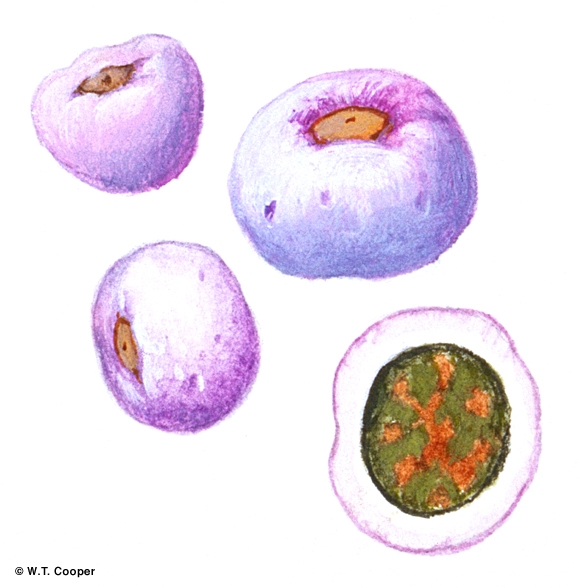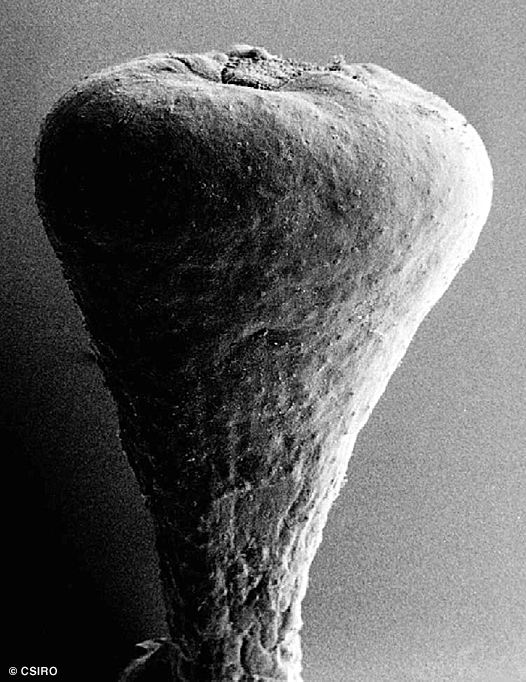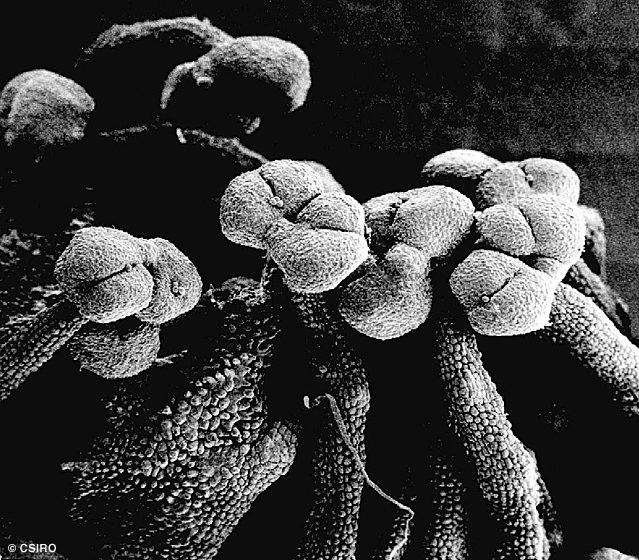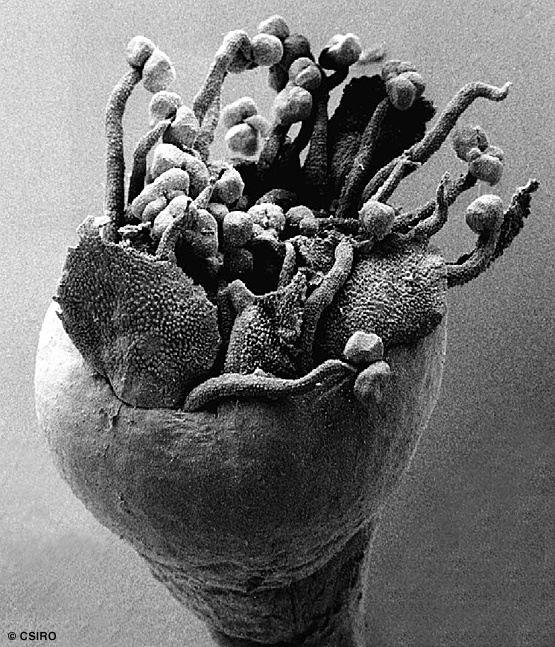Australian Tropical Rainforest Plants - Online edition
Syzygium smithii (Poir.) Nied.







Niedenzu, F.J. (1893) Die Naturlichen Pflanzenfamilien 3(7) : 85.
White Eungella Gum; Satinash, Lillipilli; Red Eungella Gum; Eungella Gum; Watergum; Scrub Mahogany; Satinash, Coast; Red Apple; Lilly Pilly; Lillipilli; Coast Satinash; Apple, Red; Creek Lilly Pilly; Lilly Pilly, Creek; Narrow Leaved Lilly pilly; Lilly Pilly, Narrow Leaved; Lillipilli Satinash
Inflorescence exceeding the leaves, bracts deciduous, absent at anthesis. Calyx tube (hypanthium) gradually tapering into the pedicel, calyx tube (hypanthium) + pedicel about 3-6 mm long, calyx tube (hypanthium) about 2-4.5 mm diam., infundibuliform, dilated at the apex at anthesis; calyx lobes small and inconspicuous, rounded or apiculate, about 0.2 mm long. Petals +/- cohering by their inflexed tips, variable and irregular in shape, +/- orbicular, about 1-1.5 mm diam.; oil dots visible but inconspicuous, up to ten per petal. Staminal filaments variable, outer longer, about 0.9-3 mm long, glandular, anthers wider than long, about 0.2 x 0.4 mm, gland terminal, sometimes inconspicuous. Placentas confined to the apex of each locule. Ovules pendulous, about 6-22 per locule. Style about 0.6-2 mm long, slightly exceeding the top of the calyx tube (hypanthium), but not exceeding the anthers.
Fruits globular or depressed globular, shallowly excavated at the apex, attaining about 8-20 mm diam.; calyx lobes persistent, small and inconspicuous. Seed attaining about 5-12 mm diam. Cotyledons with a conspicuous, hard, tanniferous inclusion in the centre with branches ramifying through the cotyledons; cotyledonary stipules small and inconspicuous.
Cataphylls about 2-4 pairs before the first pair of true leaves and sometimes between the leaves at later stages. At the tenth leaf stage: seedling completely glabrous, leaf blade elliptic or obovate, apex acuminate, acute or obtuse, base cuneate; oil dots small and numerous, visible with a lens or just visible to the naked eye. Seed germination time 24 to 108 days.
Endemic to Australia, only the rheophytic race of this species occurs in northern Australia, being found in NEQ, CEQ and southwards to coastal central New South Wales. Altitudinal range in NEQ from 450-1200 m. Grows as a rheophyte, usually along creeks and gullies flowing through wet sclerophyll forest often with Rose Gum (Eucalyptus grandis) forming the upper canopy.
A commonly cultivated species with several forms and cultivars. Used as street trees.
This species occasionally produces millable logs and the timber is marketed as Lillipilli Satinash, a useful structural timber. Wood specific gravity 0.70. Hyland (1983).





